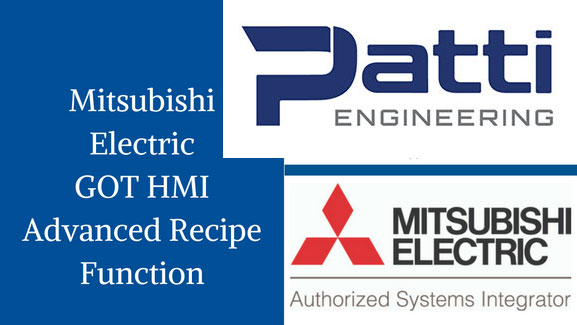
Should I Use the Advanced Recipe Function in the GOT HMI?
Blog Post by Terrance Brinkley, Director of Michigan Operations
The Mitsubishi Electric GOT 1000 HMI offers the ability to create complex recipe data right within the HMI. It’s a great feature and in the right situation, it can make programming a lot simpler. There are pros and cons for using the Advanced Recipe Function as compared to storing data in the PLC, depending on how your system is set up. Below are two examples to guide you in your decision-making process.
Example 1: A system with 1 PLC and 1 HMI
Pros of using the Advanced Recipe Function:
- Saves PLC space/memory
- Easy setup using the configured recipe in the HMI
- Ability to use special features such as scripting, which allows customization of data output
Cons of using the Advanced Recipe Function:
- One HMI in the system is the recommended limit
- Any loss of communication with the PLC could affect system operations
Example 2: A system with 1 PLC and multiple HMIs
Pros of using the internal file storage (index registers) within the PLC:
- Recipe changes can be made at different HMIs and the data will be consistent
- Data is readily available in the PLC program
- Doesn’t rely on HMI for recipe results
Cons of using the internal file storage (index registers) within the PLC:
- Takes up more PLC memory so plan ahead to ensure there is enough memory allocated for recipe data
- Recipe may become complicated; logic algorithms may need to be written
- Loss of data could slow down scan time of the PLC
In our opinion, if you are using more than one GOT in your system, you should use the PLC as your data storage location. When using complex control systems with multiple input locations, it is important to use a procedure that limits the chances of introducing error into the system. The more complex the control hardware configuration, the more important it is to limit the ability of multiple users to overwrite the recipe from different locations such as HMI devices. When you have a system that uses recipes for its application, it is advisable to consider the options above.
Related categories: Blog Control Systems Integration Mitsubishi

